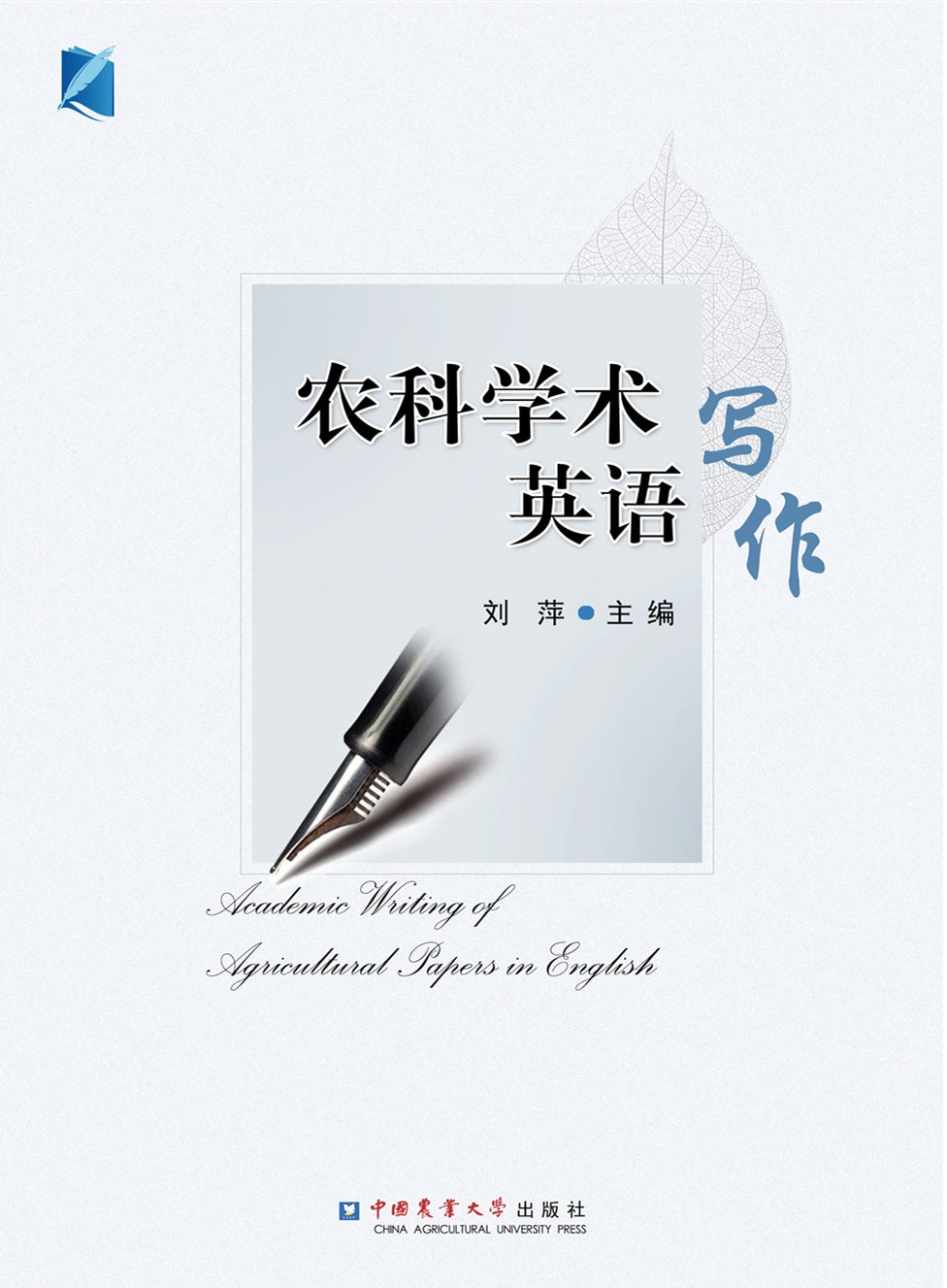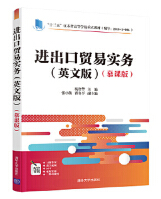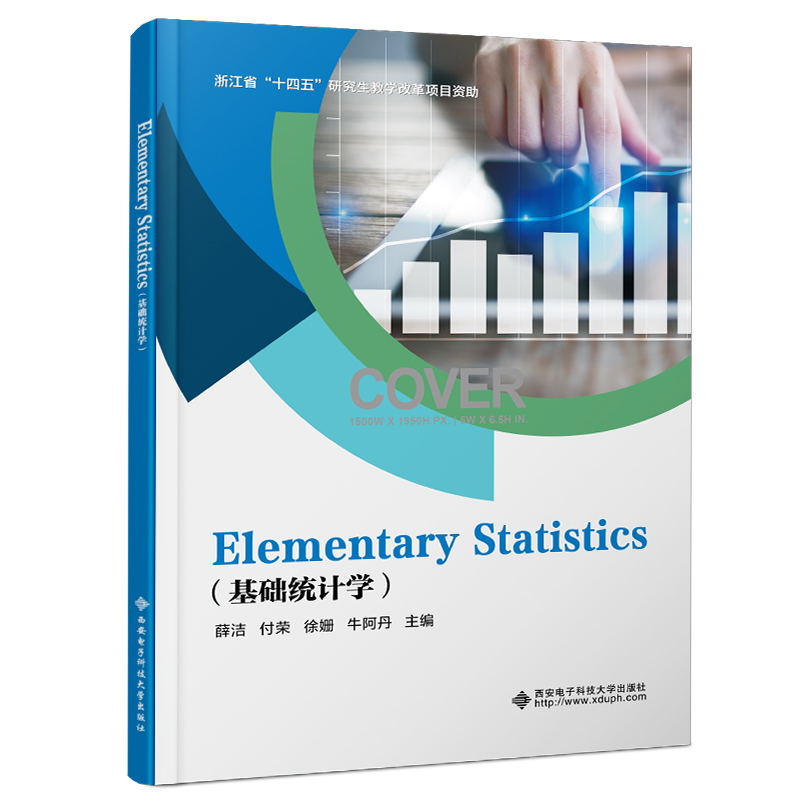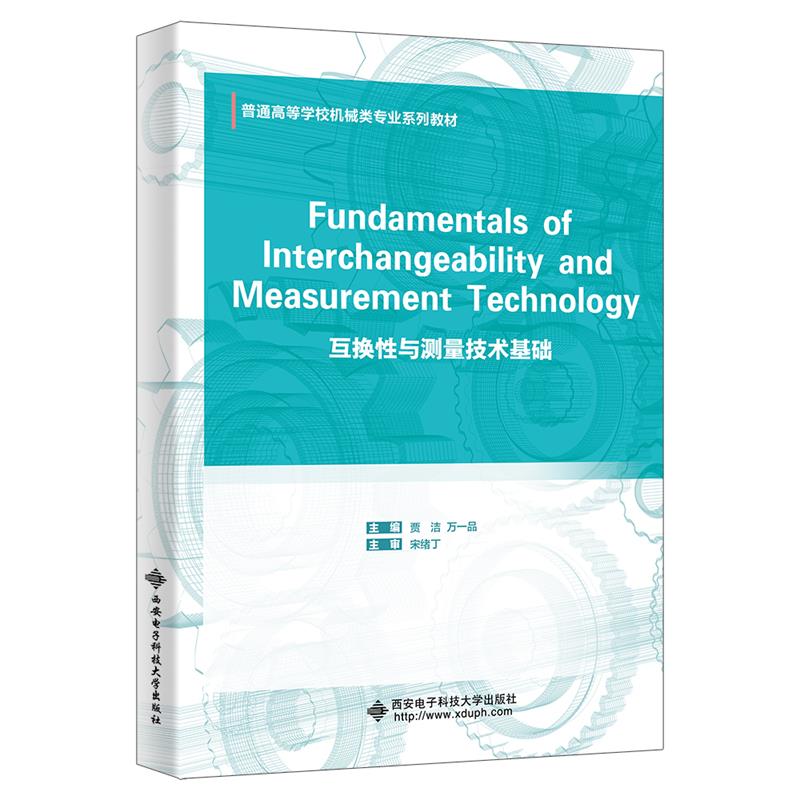- 中国农业大学出版社
- 9787565523359
- 1-1
- 323955
- 16开
- 2020-05
- 400
- S
- 本科
内容简介
本教材分为两大部分: 第一部分是基础知识,该部分主要涵盖词汇、句法、语篇等层面的语言使用特征;第二部分是章节写作,该部分依据典型的实证型英语学术论文,分为摘要、引言、材料方法、结果、讨论、结论、致谢七个章节。本教材的附录中附有华中农业大学农科英语语料库检索平台(http:∥aec.hzau.edu.cn、用户名test、密码test)(检索手册下载网址:http:∥lib.hzau.edu.cn/zwsjk/55526.jhtml),为农科学术英语写作提供专业领域的资源、工具和方法。
目录
Section Ⅰ Linguistic Features of Academic English1 Chapter 1 Lexical Features3 1.1 Highly Technical Words3 1.2 Semi-technical Words4 1.3 Compound Words and Derivatives4 1.3.1 Compound Words4 1.3.2 Derivatives5 1.4 Formality vs. Informality7 1.4.1 Verbs7 1.4.2 Nouns and Other Parts of Speech9 1.5 Technical Abbreviations10 1.5.1 Blends11 1.5.2 Clippings11 1.5.3 Acronyms11 1.5.4 Shortened Words11 1.6 Symbols and Formulas12 1.6.1 Decimals, Fractions, and Percentages12 1.6.2 Power and Root12 Chapter 2 Nominalization14 2.1 Introduction to the Concept of Nominalization14 2.1.1 Definition and Classification15 2.1.2 Special Effects Achieved by Nominalization16 2.2 Reasons for Preference of Nominalization in Scientific Writing18 2.2.1 Staticness and Abstractness18 2.2.2 Formality and Objectivity19 2.2.3 Structural Conciseness and Informational Density19 2.3 Nominalization and Evolution of Science English20 2.4 Realization of Nominalization23 2.4.1 Action Nouns in Place of Verbs23 2.4.2 Agentive Nouns in Place of Verbs25 2.4.3 Prepositional Structure in Place of Verbs or Clauses25 2.4.4 Delexical Verbs (虚意动词) in Place of Lexical/Content Verbs (实意动词)26 2.4.5 Nouns in Place of Adjectives27 2.5 Different Degrees of Nominalization and New Tendency27 Chapter 3 Impersonal Subject29 3.1 Introduction to Impersonal Subject29 3.1.1 Definition of Impersonal Subject29 3.1.2 Depersonalization (去人称化) in Academic Writing30 3.2 Impersonal Subject vs. Personal Subject31 3.2.1 Different Effects Achieved by Impersonal Subject and Personal Subject31 3.2.2 Different Thinking Modes and Expression Patterns Between English and Chinese34 3.2.3 Training of Impersonal Subject Expression Pattern36 3.3 Realization of Depersonalization in English38 3.3.1 Depersonalization by Passive Voice38 3.3.2 Inanimate Subject + Animate Predicate (无灵主语+有灵谓语)38 3.3.3 Use of “it” as the Formal Subject (形式主语)40 Chapter 4 Non-finite Verbs44 4.1 Brief Introduction44 4.1.1 Definition44 4.1.2 Types of Non-finite Verbs44 4.1.3 Functions of Non-finite Verbs44 4.1.4 Non-finite Verbs in Academic Writing45 4.1.5 Sample Analysis45 4.2 Infinitive46 4.2.1 Definition46 4.2.2 Different Forms of Infinitives46 4.2.3 Functions and Usage of Infinitives in Academic Writing47 4.2.4 Complex Infinitive51 4.2.5 Nominal Infinitive52 4.3 Gerunds52 4.3.1 Introduction to Gerunds52 4.3.2 Functions of Gerunds52 4.4 Participles54 4.4.1 Introduction to Participles54 4.4.2 Functions of Participles54 4.4.3 Dangling Participles59 Chapter 5 Subject-verb Agreement63 5.1 Basic Concepts63 5.2 Three Principles of Subject-verb Agreement63 5.2.1 Grammatical Agreement63 5.2.2 Conceptual Agreement63 5.2.3 Proximity64 5.3 Agreements with Subjects Ending in “s”64 5.3.1 Agreements with Nouns Ending in “s”64 5.3.2 Agreements with Nouns Ending in “ics”65 5.4 Agreements with Subjects of Irregular Plural Nouns65 5.5 Agreements with Collective Nouns66 5.6 Agreements with Nouns of Quantity66 5.6.1 Units of Measurement as Subjects66 5.6.2 Fractions as Subjects66 5.6.3 “Most of + Plural Nouns” as Subject67 5.7 Subjects Followed by “with” “along with” “as well as” etc.67 5.8 Subjects Connected by “and” or “both ...and ...”67 5.9 Others68 5.9.1 Agreements with Subjects of Non-finite Clauses68 5.9.2 Agreements with Subjects Preceded by “each”“every” or “neither”68 5.9.3 Agreements in Existential Sentences68 5.9.4 Agreements in Attributive Clauses68 Chapter 6 Cohesion and Coherence72 6.1 Introduction72 6.1.1 Questions72 6.1.2 Analysis72 6.2 Basic Knowledge73 6.2.1 Definition of Cohesion73 6.2.2 Definition of Coherence73 6.2.3 Relationship Between Cohesion and Coherence73 6.3 Strategies for Cohesion74 6.3.1 Use of Repetition74 6.3.2 Use of Synonyms74 6.3.3 Use of Linking Words75 6.4 Strategies for Coherence77 6.4.1 Repetition of Key Information and Use of Clear Pronouns77 6.4.2 Use of Transitional Sentences78 6.4.3 Arrangement of Ideas from General to Specific79 Section Ⅱ Writing Different Sections of a Paper83 Chapter 7 Abstract85 7.1 Definition and Characteristics85 7.1.1 Definition of an Abstract85 7.1.2 Characteristics of an Abstract85 7.2 Structure of an Abstract86 7.2.1 Four Parts and Structural Elements86 7.2.2 Sample Analysis86 7.3 Typical Expressions of the Four Parts of an Abstract90 7.4 Tenses in Abstract Part94 7.4.1 Simple Present Tense94 7.4.2 Simple Past Tense94 7.4.3 Simple Future Tense95 Chapter 8 Introduction96 8.1 Basic Knowledge96 8.1.1 Definition of an Introduction96 8.1.2 Purposes of an Introduction97 8.1.3 Elements of an Introduction97 8.1.4 Structure of an Introduction98 8.2 Sample Analysis100 8.3 Writing Steps of an Introduction104 8.3.1 General Steps Associated with Writing an Introduction104 8.3.2 Narrative Flow106 8.4 Useful Sentence Patterns for Writing an Introduction106 8.4.1 Establishment of the Specific Topic107 8.4.2 Description of Previous Studies107 8.4.3 Introduction to the Present Methodology107 8.4.4 Description of the Purpose and/or the Principal Activities107 8.4.5 Presenting the Structure of the Whole Paper108 8.5 Tenses in Introduction108 8.5.1 Simple Past108 8.5.2 Simple Present108 8.5.3 Present Perfect109 8.5.4 Past Perfect109 Chapter 9 Materials and Methods113 9.1 Basic Knowledge113 9.1.1 Definition113 9.1.2 Structure114 9.2 Structural Elements of Materials and Methods Section118 9.2.1 Structural Elements of Materials Section and Typical Expressions118 9.2.2 Structural Elements of Methods Section and Typical Expressions121 9.3 Linguistic Features122 9.3.1 Tense122 9.3.2 Voice123 Chapter 10 Results125 10.1 Basic Knowledge125 10.1.1 General Introduction125 10.1.2 Features of the Results Section125 10.1.3 Formats of the Results Section126 10.2 Sample Analysis of the Results Section126 10.3 Major Contents of the Results Section134 10.3.1 Major Structural Elements of Results Section134 10.3.2 Three Ways to Make Comments134 10.4 Guidelines for Writing the Results Section135 10.4.1 General Guidelines135 10.4.2 Specific Guidelines136 10.5 Using Graphs139 10.5.1 Bar Charts139 10.5.2 Pie Charts139 10.5.3 Line Graphs139 10.5.4 Tables139 10.6 Language Focus140 10.6.1 Graphic Description140 10.6.2 Comparison and Contrast142 10.6.3 Typical Sentence Patterns for Writing the Results Section143 10.6.4 Four Aspects of Reporting Results144 Chapter 11 Discussion147 11.1 Basic Knowledge147 11.1.1 Definition of a Discussion147 11.1.2 Features of Discussion Section147 11.1.3 Structural Elements of a Discussion148 11.2 Sample Analysis148 11.2.1 Structural Elements of a Discussion148 11.2.2 Language Use in a Discussion156 11.3 Steps of Writing a Discussion159 11.4 Typical Expressions160 11.5 Tense in Discussion Section163 Chapter 12 Conclusion166 12.1 Basic Knowledge166 12.1.1 Definition of a Conclusion166 12.1.2 Information Elements in a Conclusion166 12.1.3 Rhetorical Structure of a Conclusion167 12.1.4 Language Features of a Conclusion168 12.1.5 Relationship Between Conclusion and Introduction168 12.1.6 Suggestions for Writing a Conclusion169 12.1.7 Typical Sentence Patterns and Transitions in Conclusions169 12.2 Sample Analysis of a Conclusion Structure170 12.3 Grammar of Conclusion Writing173 12.3.1 Modal Verbs173 12.3.2 Clause of Concession173 Chapter 13 Acknowledgements177 13.1 Basic Knowledge177 13.1.1 Definition of Acknowledgements177 13.1.2 Purposes of Acknowledgements177 13.2 Linguistic Features of Acknowledgements177 13.2.1 Concreteness177 13.2.2 Conciseness178 13.2.3 Completeness178 13.3 Tense in Acknowledgements179 13.3.1 Simple Present Tense179 13.3.2 Simple Past Tense179 13.4 Typical Expressions in Acknowledgements180 13.5 Sample Analysis180 Appendix 1 高频农科英语词汇表183 Appendix 2 华中农业大学农科英语语料库网络检索平台197









